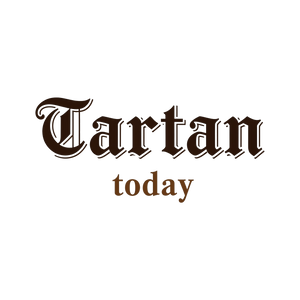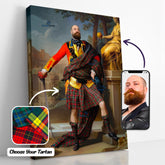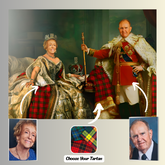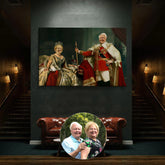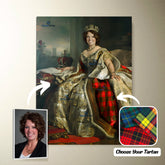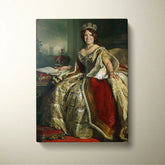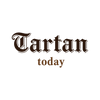-
Personalized Clan Belshes Tartan Drummer Ornament with Custom Name – Scottish Christmas Tree Decoration QM33
Personalized Clan Belshes Tartan Drummer Ornament with Custom Name – Scottish Christmas Tree Decoration QM33Celebrate your Scottish heritage with this unique wood & acrylic tartan ornament. Perfect as a personalized Christmas decoration or a meaningful gift for friends and relatives on special occasions such...- From $19.99 USD
$25.99 USD- From $19.99 USD
- Unit price
- per
Save $6.00 -
Personalized Clan Belshes Tartan Bagpipe Ornament with Custom Name – Scottish Christmas Tree Decoration BY86
Personalized Clan Belshes Tartan Bagpipe Ornament with Custom Name – Scottish Christmas Tree Decoration BY86Celebrate your Scottish heritage with this unique wood & acrylic tartan ornament. Perfect as a personalized Christmas decoration or a meaningful gift for friends and relatives on special occasions such...- From $19.99 USD
$25.99 USD- From $19.99 USD
- Unit price
- per
Save $6.00 -
Personalized Clan Belshes Tartan Bagpipe Ornament with Custom Name – Scottish Christmas Tree Decoration LI55
Personalized Clan Belshes Tartan Bagpipe Ornament with Custom Name – Scottish Christmas Tree Decoration LI55Celebrate your Scottish heritage with this unique wood & acrylic tartan ornament. Perfect as a personalized Christmas decoration or a meaningful gift for friends and relatives on special occasions such...- From $19.99 USD
$25.99 USD- From $19.99 USD
- Unit price
- per
Save $6.00 -
Personalized Clan Belshes Clan Crest Tartan Santa Ornament – Custom Acrylic Christmas Decoration YJ51 - Belshes
Personalized Clan Belshes Clan Badge Tartan Ornament – Custom Acrylic Christmas Decoration YJ51Celebrate your Scottish heritage with this unique wood & acrylic tartan ornament. Perfect as a personalized Christmas decoration or a meaningful gift for friends and relatives on special occasions such as Christmas,...- From $19.99 USD
- From $19.99 USD
- Unit price
- per
-
Belshes
-
Clan Belshes Tartan Scotland Map Canvas “Tartan Runs Through My Veins” Wall Art XB50
Clan Belshes Tartan Scotland Map Canvas “Tartan Runs Through My Veins” Wall Art XB50Celebrate your Scottish heritage with this striking canvas print featuring the map of Scotland filled with Belshes tartan, paired with the bold phrase: “Tartan Runs Through My Veins.” Whether you're honoring...- From $35.05 USD
- From $35.05 USD
- Unit price
- per
-
Personalized Clan Belshes Tartan Shirt with Scotland Coat of Arms & Custom Name WI53 - Belshes
Belshes Tartan Shirt with Scotland Coat of Arms & Custom Name WI53Celebrate your Scottish heritage with this Belshes Tartan Shirt with Scotland Coat of Arms & Custom Name WI53, featuring a bold Scotland Coat of Arms and your custom name on the back. Made...- From $39.54 USD
- From $39.54 USD
- Unit price
- per
-
Belshes
-
Clan Belshes Tartan Custom Face Hawaiian Shirt – Unisex Gift for Family Members, Summer Party OO32 - Belshes Tartan
Clan Belshes Tartan Custom Face Hawaiian Shirt – Unisex Gift for Family Members, Summer Party OO32?? Stand out with our custom face Hawaiian shirt featuring your chosen tartan pattern and up to 10 faces printed for free! Whether it's your own, your pet's, or...- $42.25 USD
$59.99 USD- $42.25 USD
- Unit price
- per
Save $17.74-
Belshes Tartan
-
Clan Belshes Tartan Flat Cap HZ40 - Clan Belshes Tartan
Clan Belshes Tartan Flat Cap HZ40Elevate Your Heritage: The Authentic Tartan Jeff Cap Step into a legacy of timeless style and comfort with our Authentic Tartan Flat Cap. Crafted for the discerning American who cherishes their Scottish roots and appreciates classic elegance, this isn’t just...- From $33.85 USD
$45.59 USD- From $33.85 USD
- Unit price
- per
Save $11.74-
Clan Belshes Tartan
-
Clan Belshes Tartan Crest, Badges, Heraldry, Clans, Family Scotland PNG, Digital ClipArt High Quality LY31
Clan Belshes Tartan Crest, Badges, Heraldry, Clans, Family Scotland PNG, Digital ClipArt High Quality LY31 DIGITAL FILE ONLY* ** This listing is an INSTANT DIGITAL DOWNLOAD, not a physical item. An instant download is a digital file you can download and use immediately **...- $3.49 USD
$5.99 USD- $3.49 USD
- Unit price
- per
Save $2.50 -
Clan Belshes Tartan Polo Shirt Viking Wolf BG18 - Belshes Tartan
Clan Belshes Tartan Polo Shirt Viking Wolf BG18 Description: Crafted in 100% polyester with your own design which combines comfort and vogue. This shirt has some'great features, it has 3 buttons, elastic collar and cuffs. 12.35 Oz. Made from polyester fabric. 3 buttons, elastic...- $38.25 USD
- $38.25 USD
- Unit price
- per
-
Belshes Tartan
-
Clan Belshes Tartan Polo Shirt Half of Me - Cross Style BR28 - Belshes Tartan
Clan Belshes Tartan Polo Shirt Half of Me - Cross Style BR28 Description: Crafted in 100% polyester with your own design which combines comfort and vogue. This shirt has some'great features, it has 3 buttons, elastic collar and cuffs. 12.35 Oz. Made from polyester...- $38.25 USD
- $38.25 USD
- Unit price
- per
-
Belshes Tartan
-
Clan Belshes Tartan Polo Shirt - Royal Coat Of Arms Style NH73 - Belshes Tartan
Clan Belshes Tartan Polo Shirt - Royal Coat Of Arms Style NH73 Description: Crafted in 100% polyester with your own design which combines comfort and vogue. This shirt has some'great features, it has 3 buttons, elastic collar and cuffs. 12.35 Oz. Made from polyester...- $38.25 USD
- $38.25 USD
- Unit price
- per
-
Belshes Tartan
-
Clan Belshes Tartan Polo Shirt - Lion Rampant And Celtic Thistle Style UR28 - Belshes Tartan
Clan Belshes Tartan Polo Shirt - Lion Rampant And Celtic Thistle Style UR28 Description: Crafted in 100% polyester with your own design which combines comfort and vogue. This shirt has some'great features, it has 3 buttons, elastic collar and cuffs. 12.35 Oz. Made from...- $38.25 USD
- $38.25 USD
- Unit price
- per
-
Belshes Tartan
-
Clan Belshes Tartan Polo Shirt - Believe In Me Style PP85 - Belshes Tartan
Clan Belshes Tartan Polo Shirt - Believe In Me Style PP85 Description: Crafted in 100% polyester with your own design which combines comfort and vogue. This shirt has some'great features, it has 3 buttons, elastic collar and cuffs. 12.35 Oz. Made from polyester fabric....- $38.25 USD
- $38.25 USD
- Unit price
- per
-
Belshes Tartan
-
Clan Belshes Tartan Polo Shirt - Alba Celtic Style AO43 - Belshes Tartan
Clan Belshes Tartan Polo Shirt - Alba Celtic Style AO43 Description: Crafted in 100% polyester with your own design which combines comfort and vogue. This shirt has some'great features, it has 3 buttons, elastic collar and cuffs. 12.35 Oz. Made from polyester fabric. 3...- $38.25 USD
- $38.25 USD
- Unit price
- per
-
Belshes Tartan
-
Clan Belshes Tartan Polo Shirt RC29 - Belshes Tartan
Clan Belshes Tartan Polo Shirt RC29 Description: Crafted in 100% polyester with your own design which combines comfort and vogue. This shirt has some'great features, it has 3 buttons, elastic collar and cuffs. 12.35 Oz. Made from polyester fabric. 3 buttons, elastic collar and...- $38.25 USD
- $38.25 USD
- Unit price
- per
-
Belshes Tartan
-
Clan Belshes Clan Polo Shirt Viking Wolf TH68 - Belshes
Clan Belshes Clan Polo Shirt Viking Wolf TH68 Description: Crafted in 100% polyester with your own design which combines comfort and vogue. This shirt has some'great features, it has 3 buttons, elastic collar and cuffs. 12.35 Oz. Made from polyester fabric. 3 buttons, elastic...- $38.25 USD
- $38.25 USD
- Unit price
- per
-
Belshes
-
Clan Belshes Clan - Military Polo Shirt WB22 - Belshes Tartan
Clan Belshes Clan - Military Polo Shirt WB22 Description: Crafted in 100% polyester with your own design which combines comfort and vogue. This shirt has some'great features, it has 3 buttons, elastic collar and cuffs. 12.35 Oz. Made from polyester fabric. 3 buttons, elastic...- $38.25 USD
- $38.25 USD
- Unit price
- per
-
Belshes Tartan
-
Clan Belshes (or Belsches) Clan Unisex Polo Shirt - Celtic Tree Of Life VB34 - Belshes (or Belsches) Tartan
Clan Belshes (or Belsches) Clan Unisex Polo Shirt - Celtic Tree Of Life VB34 Description: Crafted in 100% polyester with your own design which combines comfort and vogue. This shirt has some'great features, it has 3 buttons, elastic collar and cuffs. 12.35 Oz. Made...- $38.25 USD
- $38.25 USD
- Unit price
- per
-
Belshes (or Belsches) Tartan
-
Belshes Tartan Clan Crest Badge Aloha Hawaiian Shirt Tropical Old Style BY43 - Belshes Tartan
Belshes Tartan Clan Crest Badge Aloha Hawaiian Shirt Tropical Old Style BY43 These Hawaiian shirts and shorts are suitable for hot summer days or beach trips with your friends, family, and loved ones. This is an excellent gift, vacation outfit, or simply revamp your...- $43.25 USD
- $43.25 USD
- Unit price
- per
-
Belshes Tartan
Ex: Your Tartan + Product
Popular Products
Turn Me Royal Personalized Portrait from Your Photo, Custom Tartan. Custom Canvas Wall Art as Gift for Men
- From $32.45 USD
- From $32.45 USD
- Unit price
- / per
Royalty Couple Personalized Portrait from Your Photo, Custom Tartan. Custom Canvas Wall Art
- From $47.45 USD
- From $47.45 USD
- Unit price
- / per
The Queen Personalized Portrait from Your Photo, Custom Tartan. Custom Canvas Wall Art as Gift for Women
- From $32.45 USD
- From $32.45 USD
- Unit price
- / per
Which Clan Are You From?
List Of Tartan
-
Clan A
- Abercrombie Tartan
- Aberdeen Tartan
- Abernethy Tartan
- Adair Tartan
- Adam Tartan
- Ayrshire Tartan
- Agnew Tartan
- Aikenhead Tartan
- Ainslie Tartan
- Aiton Tartan
- Allan Tartan
- Alexander Tartan
- Allardice Tartan
- Allison Tartan
- Anderson Tartan
- Angus Tartan
- Anstruther Tartan
- Arbuthnot Tartan
- Armstrong Tartan
- Arnott Tartan
- Auchinleck Tartan
- Ayrshire Tartan
-
Clan B
- Baillie Tartan
- Bain Tartan
- Baird Tartan
- Balfour Tartan
- Bannatyne Tartan
- Bannerman Tartan
- Barclay Tartan
- Baxter Tartan
- Beaton Tartan
- Bell Tartan
- Belshes Tartan
- Bethune Tartan
- Beveridge Tartan
- Binning Tartan
- Bisset Tartan
- Blackadder Tartan
- Blackstock Tartan
- Black Watch Tartan
- Blair Tartan
- Blane Tartan
- Blyth Tartan
- Borthwick Tartan
- Boswell Tartan
- Bowie Tartan
- Boyd Tartan
- Boyle Tartan
- Brisbane Tartan
- Brodie Tartan
- Brown/ Broun Tartan
- Bruce Tartan
- Buccleuch Tartan
- Buchan Tartan
- Buchanan Tartan
- Burnett Tartan
- Burns Tartan
- Butter Tartan
- Byres Tartan
-
Clan C
- Cairns Tartan
- Calder Tartan
- Callander Tartan
- Cameron Tartan
- Campbell Tartan
- Campbell of Breadalbane Tartan
- Campbell of Cawdor Tartan
- Carmichael Tartan
- Carnegie Tartan
- Carruthers Tartan
- Cathcart Tartan
- Chalmers Tartan
- Charteris Tartan
- Chattan Tartan
- Cheyne Tartan
- Chisholm Tartan
- Christie Tartan
- Clark Tartan
- Clelland Tartan
- Clephan Tartan
- Clergy Tartan
- Cochrane Tartan
- Cockburn Tartan
- Colquhoun Tartan
- Colville Tartan
- Cooper Tartan
- Couper Tartan
- Craig Tartan
- Cranstoun Tartan
- Crawford Tartan
- Crichton Tartan
- Crief District Tartan
- Crosbie Tartan
- Cumming Tartan
- Cunningham Tartan
- Currie Tartan
- Clan D
- Clan E
- Clan F
- Clan G
- Clan H
- Clan I
- Clan J
- Clan K
- Clan L
-
Clan M
- Maitland Tartan
- Malcolm Tartan
- Mar Tartan
- Marjoribanks Tartan
- Maxtone Tartan
- Matheson Tartan
- Maule Tartan
- Maxwell Tartan
- Meldrum Tartan
- Melville Tartan
- Menzies Tartan
- Mercer Tartan
- Middleton Tartan
- Moffat Tartan
- Moncrieffe Tartan
- Montgomery Tartan
- Monypenny Tartan
- Moncreiffe Tartan
- Monteith Tartan
- Morrison Tartan
- Mouat Tartan
- Moubray Tartan
- Mow Tartan
- Muir_More Tartan
- Muirhead Tartan
- Munro Tartan
- Murray Tartan
- Murray of Atholl Tartan
-
Clan Mc/Mac
- MacAlister Tartan
- MacArthur Tartan
- MacAlpine Tartan
- MacAulay Tartan
- MacBain Tartan
- MacBean Tartan
- MacBeth Tartan
- MacCallum Tartan
- MacCraig Tartan
- MacColl Tartan
- MacCorquodale Tartan
- MacDiarmid Tartan
- MacDonald Tartan
- MacDonald of Clanranald Tartan
- MacDonald of Sleat Tartan
- MacDonnell of Glengarry Tartan
- MacDonnell of Keppoch Tartan
- MacDougall Tartan
- MacDowall Tartan
- MacDuff Tartan
- MacEwen_MacEwan Tartan
- MacEdward Tartan
- MacFarlane Tartan
- MacGill Tartan
- MacGillivray Tartan
- MacGregor Tartan
- MacGowan (McGowan) Tartan
- MacHardy Tartan
- MacIan Tartan
- MacInnes Tartan
- MacIntyre Tartan
- MacKay Tartan
- MacKillop Tartan
- MacKellar Tartan
- Mackinlay Tartan
- MacKenzie Tartan
- Mackie Tartan
- MacKinnon Tartan
- MacKintosh / MacIntosh Tartan
- MacLeod Tartan
- MacMillan Tartan
- MacNab Tartan
- MacNaughton Tartan
- MacNeil / MacNeill Tartan
- MacNeil of Colonsay Tartan
- MacNicol Tartan
- MacPhail Tartan
- MacPhee_MacFie Tartan
- MacPherson Tartan
- MacQuarrie Tartan
- MacQueen Tartan
- MacRae Tartan
- MacRow Tartan
- MacSporran Tartan
- MacTaggart Tartan
- MacTavish Tartan
- MacThomas Tartan
- McCorquodale Tartan
- McCulloch Tartan
- McFadzen Tartan
- McGeachie Tartan
- McIver Tartan
- McKerrell Tartan
- Clan N
- Clan O
- Clan P
- Clan R
-
Clan S
- Sandilands Tartan
- Scott Tartan
- Scrymgeour Tartan
- Selkirk Tartan
- Sempill Tartan
- Seton Tartan
- Shaw Tartan
- Shepherd Tartan
- Sinclair Tartan
- Skene Tartan
- Skirving Tartan
- Smith Tartan
- Somerville Tartan
- Spalding Tartan
- Spens Tartan
- Spottiswood Tartan
- Stevenson Tartan
- Stewart Tartan
- Stewart of Appin Tartan
- Stirling Tartan
- Strachan Tartan
- Straiton Tartan
- Strange Tartan
- Strathclyde District Tartan
- Stuart of Bute Tartan
- Sutherland Tartan
- Swinton Tartan
- Clan T
- Clan U W Y
- Request Your Clan
Clan Belshes (Belshes Tartan)
1. About Clan Belshes (Belshes Tartan)
2. Clan Belshes History (Belshes Tartan)
The monks of Jedburgh once had a barony with the same name located close to Jedburgh in Roxburghshire, and the clan was called after this barony.
The barony was initially known by its current name, Belasis. In 1296, Richard de Belchis appended his personal seal to the homage he submitted.
In the year 1530, Alexander Belchis held the position of bailie of Edinburgh. John Belcheis served as the commissioner for the Tweed fisheries dispute in 1627, and Alexander Belchellis of Tofts was admitted for free as a burgess of Glasgow in 1631.
In the year 1634, Justice of the Peace for Berwickshire was given the title of Alexander Belseis of Tofts.
In the year 1651, Alexander Belches was appointed to a position on the Committee of Provisions for the Army.
The end of the hereditary line occurred in 1712 with the passing of John Belshes of that Ilk, who was survived by four daughters.
3. Clan Belshes Tartans
As there is no officially recognized Belshes tartan, the Roxburgh District tartan, which is associated with the region where the name was first used, is the one that is most frequently worn by the clan.
Roxburgh District modern
Roxburgh District ancient
Roxburgh District muted
4. Clan Belshes Crest & Coats of Arms
4.1 Clan Belshes Crest
Worn by all of the name and ancestry
4.2 Clan Belshes Coat of Arms
With the exception of civic and corporate arms, a coat of arms can only be bestowed upon an individual in accordance with the laws of Scottish heraldry. There is no such thing as a "family coat of arms," as such a thing does not exist.
The arms depicted below are personal arms (with the exception of the ones listed above). Only the person to whom these arms were awarded has the legal right to make use of them.
5. Clan Belshes Places & People
5.1 Clan Belshes Places
There is evidence that suggests that the Invermay Old House, located in Perth and Kinross, was constructed in the 17th century, though it could have been constructed earlier. Above a window that is no longer accessible due to masonry construction, there is a stone with the year 1633 etched into it.
However, this date may refer to the year that restoration work was finished. Once a Belshes stronghold, the mansion was deserted between the years 1770 and 1780, and it is now in ruins.
5.2 Clan Belshes People
Sir John Stuart, 4th Baronet (1752–1821)
His birth name was Wish-art-Belches, and he served as a Member of Parliament for Kincardineshire between the years 1797 and 1806.
As the only son of William Belches, Esq., he succeeded to the title of baronet upon the passing of his great-uncle, Sir William Stuart, 2nd Baronet, in 1777. At this time, he also changed his surname from Wishart Belches to Stuart.
His marriage to Lady Jane Leslie, the eldest daughter of David Melville, 6th Earl of Leven, took place in 1775, and he was promoted to the position of Baron of the Exchequer in Scotland in 1807.
After his passing, the Wishart baronetcy of Clifton Hall, Edinburgh fell into disuse and is now extinct.
- Choosing a selection results in a full page refresh.
